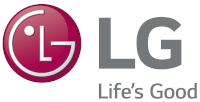Futurecast preparing for Cleveland field test of next-gen TV system
Thursday, April 2nd, 2015
Futurecast™ Preparing for Cleveland Field Test of Next-Gen TV Broadcast System
- Real-World Trials in Ohio to Follow Successful Testing in Wisconsin Showing Robust, Simultaneous Reception of 4K Ultra HD and Mobile TV Signals
CLEVELAND, OH — The future of TV is coming to Cleveland where experimental broadcasts will further verify the capabilities of transmission technologies developed for the ATSC 3.0 next-generation television broadcast standard.
The FUTURECAST Universal Terrestrial Broadcasting System is a leading contributor to the optimal “physical layer” solution at the heart of the ATSC 3.0 broadcast system now being standardized by the Advanced Television Systems Committee, and FUTURECAST will go “on-the-air” on Cleveland’s Channel 31 later this spring.
Co-developed by LG Electronics, its U.S. R&D subsidiary Zenith, and GatesAir as the foundation of next-generation terrestrial broadcasting in the United States and around the world, FUTURECAST can deliver 4K Ultra HD content and two robust mobile TV streams in a single 6-Megahertz channel, while optimizing indoor reception and offering unparalleled spectrum efficiency.
The Cleveland field tests precede what could become a joint project of NAB Labs, the Pearl TV broadcaster partnership, Tribune Media, and others that are eager to develop a test-bed and “ATSC 3.0 model station.” The work FUTURECAST is doing on Channel 31 is a positive step in that direction.
GatesAir has received a special temporary experimental broadcast license from the FCC to operate a full-power Channel 31 transmitter in the Cleveland area, for use in studying the FUTURECAST Universal Terrestrial Broadcast System under various test scenarios in a real-world environment over the next six months. The tests will use the transmitter and broadcast facilities of WJW-TV, the Tribune Media-owned Fox affiliate in Cleveland. (Channel 31 was WJW’s pre-DTV transition channel allocation; WJW now broadcasts on Channel 8.)
Real-World Test Conditions to Verify System Capabilities
“Enabling the ability to offer new services and capabilities like 4K, mobile and interactive services are of keen interest to Tribune Media, Pearl TV and NAB Labs. The new standard will need to be more robust, flexible and extensible, and we’re looking forward to seeing how FUTURECAST and other proposed systems will work in real-world conditions,” said Larry Wert, Tribune’s President of Broadcast Media.
The FUTURECAST Universal Terrestrial Broadcasting System is designed to provide the optimized combination of broadcasting capabilities for fixed, portable and mobile use. Flexible parameters allow broadcasters to mix diverse services – from fixed 4K Ultra HD and deep-indoor handheld reception to high-speed mobile reception – in a single RF channel with maximum efficiency.
The capability for conducting both daytime and nighttime experimental broadcasts in Cleveland will build on the success of overnight field testing of FUTURECAST with WKOW-TV in Madison, Wis. These 2014 tests collected nearly 50,000 pieces of data from scores of reception sites including challenging reception areas inside buildings, in fast-moving vehicles and at locations ranging from downtown to 50 miles from the transmitter.
“Since our Wisconsin field tests last summer and fall, we’ve continued to make improvements and refinements to the FUTURECAST system,” said Dr. Skott Ahn, President and Chief Technology Officer, LG Electronics, co-developer of the FUTURECAST system. “We’re looking forward to testing our physical layer solution at another location that offers the opportunity to test during the day and in the evening.”
Expected to redefine TV broadcasting for decades to come, the overall ATSC 3.0 next-generation broadcast television system will require higher capacity to deliver 4K Ultra-High-Definition services, robust reception on mobile devices and improved spectrum efficiency, according to the ATSC.
Rich Redmond, Chief Product Officer for FUTURECAST co-developer GatesAir, said, “The FUTURECAST system will fully meet broadcasters’ requirements for the ATSC 3.0 physical layer and accelerate the transition to next-gen broadcasting. FUTURECAST opens the door to new modes of transmission and new channels of opportunity, including IP networking and mobile connectivity. These advances will help broadcast remain competitive as consumer habits for TV viewing evolve to more platforms.”
Better Throughput, Improved Multipath Performance
The FUTURECAST system supports single-frequency networks and/or multiple transmitters, and its use of a single RF transmission’s flexible physical layer profile assures optimum quality of service. The extensible new system is designed to support evolution to future broadcast systems even beyond ATSC 3.0.
Key elements of the FUTURECAST system include:
- Data throughput increases of 30 percent and improved multipath performance (compared with the current DTV standard) for fixed and portable TV reception;
- Advanced emergency alerting with rich-media and geo-targeted warning capabilities;
- Energy-saving features for consumer receivers and enhanced indoor TV signal penetration for mobile reception thanks to flexible system parameter choices;
- Advanced modes for delivery of very high data rates and very robust transmission capabilities;
- State-of-the-art error correction coding and signal constellations;
- Future Extension Frames to support evolution of future broadcast systems; and,
- Improved single frequency network service.
The increased payload capacity of the physical layer combined with HEVC encoding will allow broadcasters many more options when planning their broadcast services.
Designed for easy extension to various current and future transport formats, FUTURE-CAST optimizes efficiency for the most-used data formats (Internet Protocol, Transport Stream) via customized stream compression. FUTURECAST’s superior RF approach addresses the co-channel and adjacent-channel interference challenges related to the anticipated UHF spectrum repacking.
The FUTURECAST Universal Terrestrial Broadcasting System is the latest collaboration among LG, Zenith and GatesAir, co-inventors of the transmission system behind the ATSC A/153 Mobile Digital TV Standard, adopted by the industry in 2009. Zenith invented the core transmission system at the heart of today’s ATSC A/53 Digital Television Standard, approved by the Federal Communications Commission in 1996.
Latest News
- Barb to start reporting TV-set viewing of YouTube channels
- SAT FILM selects multi-DRM from CryptoGuard
- Qvest and ARABSAT to launch OTT streaming platform
- ArabyAds & LG Ad Solutions partner with TVekstra in Turkey
- Freeview NZ satellite TV service to move to Koreasat 6
- Comscore expands YouTube CTV measurement internationally
